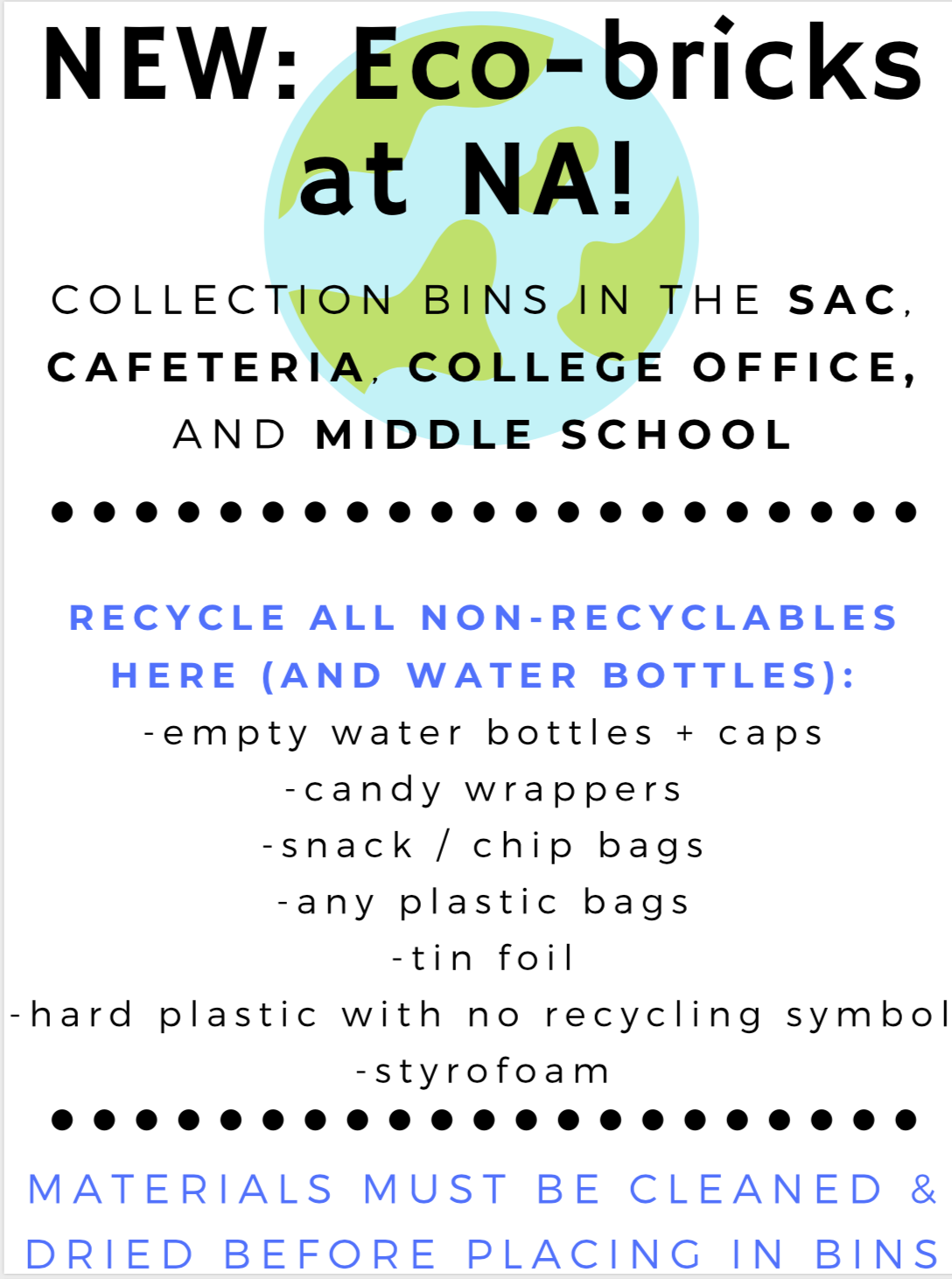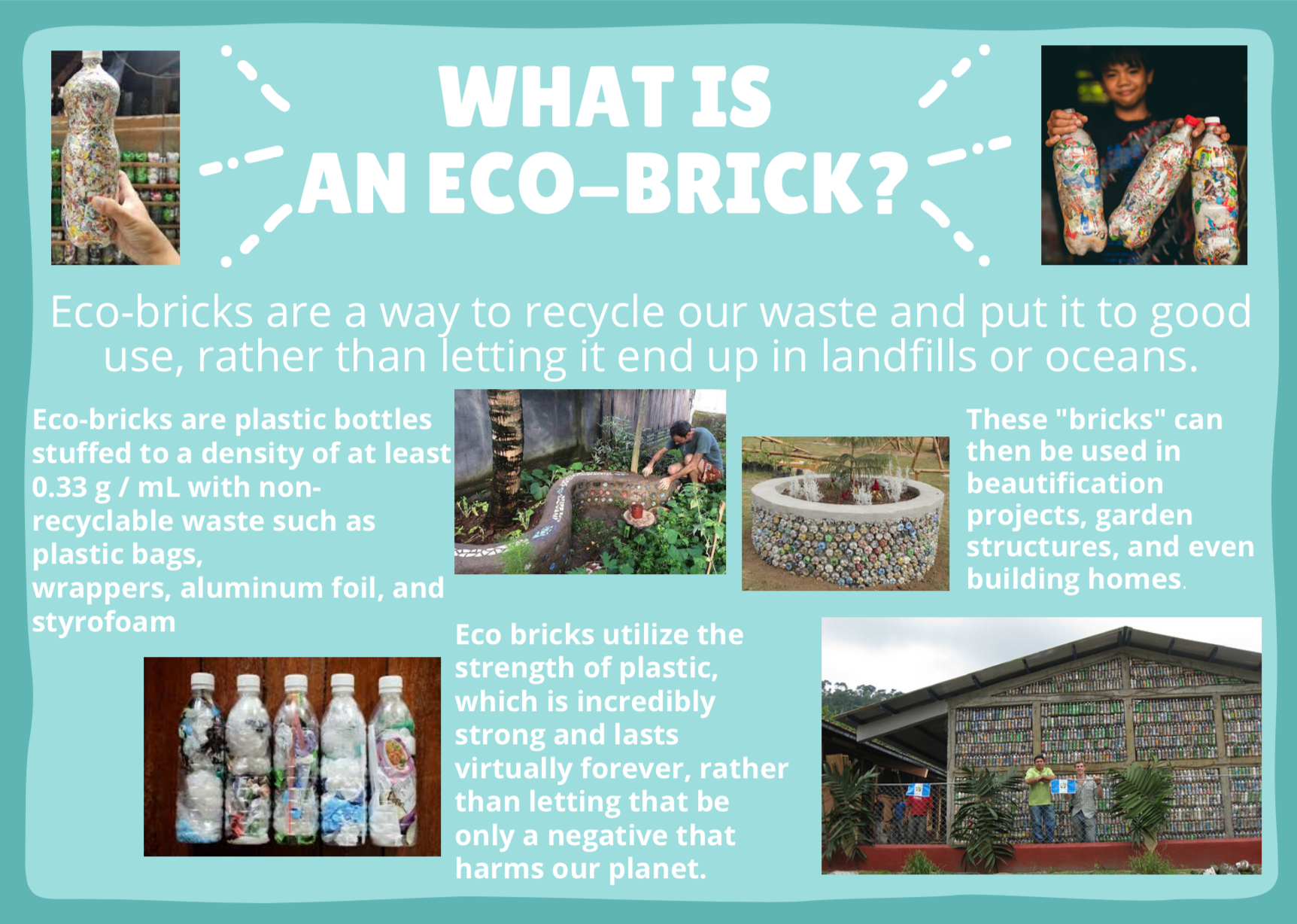Last semester, Green and Blue Committee began a new initiative within the school: creating eco-bricks.

In various locations throughout the building are collection bins for non-recyclable waste such as soft plastics, plastic bags, aluminum foil, and styrofoam. These materials would otherwise be thrown in the trash or accidentally recycled, leading to more plastic ending up in landfills and oceans.
Eco-bricks utilize these materials and their strengths, reusing them to create something new by stuffing a plastic bottle extremely tightly with non-recyclable waste to a density of about 0.33 g/mL.

Eco-bricks are collected and used to build structures from benches and gardening or composting bins to entire homes and buildings.

Eco-bricks are a fun project and a creative outlet—students have lots of fun building their bricks and feel satisfied when they finally finish one, and eventually enjoy building with the lego-like eco-brick modules.
Newark Academy’s finished eco-bricks will be collected for the New Jersey Student Sustainability Coalition, an environmental organization that students at NA including Sophia Ludtke ’20 and Jamie Paradis ’20 are involved with. NJSSC’s eco-brick project began this year after Jamie proposed it to the coalition and was elected to be a project coordinator. She was introduced to eco-bricks this summer during her learning-service trip in Costa Rica, volunteering for the organization Verdiazul. After feeling inspired by Costa Rica’s strong environmental activism and policies, Jamie wanted to bring the collaboration and sustainability of eco-bricks to NJ.
All of the bricks made by NJSSC will be used in building projects beginning in the spring. Coalition members will meet to build garden structures and park benches.
The beauty of eco-bricks is they can be reused over and over—instead of letting the durability of plastic be only a harmful factor for the environment, eco-bricks utilize the strength of plastic and the fact that it lasts virtually forever as a positive opportunity for strong building. So, in the beauty of reusing and recycling eco-bricks, Mr. Torson’s Environmental Sculpture June Term class plans to use NA’s eco-bricks to build sculptures before they are used by NJSSC in more permanent structures.
To learn more about eco-bricks, go to ecobricks.org, or reach out to Jamie (jparadis20@newarka.edu) with any questions!

You must be logged in to post a comment.